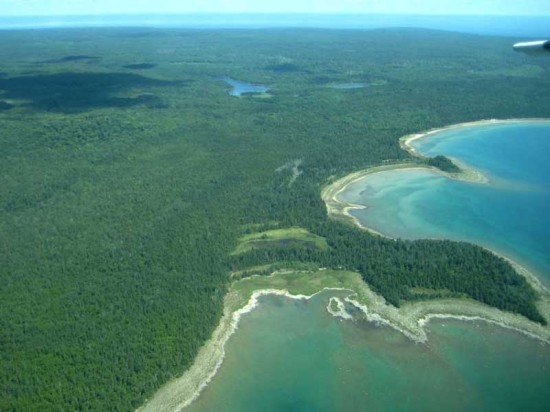GORE BAY—The Gore Bay Fish and Game Club (GBFGC) wants the current Fisheries Management Zone 10 bass regulations to remain status quo.
“We want to keep the regulations as they are currently,” said Chris Robinson, chair of the GBFGC after a meeting last week. “We want the catch limits and (bass season) time frame to remain the same, that’s what the club members are in favour of.” He pointed out, “bass fishing is really coming on (for Manitoulin) and people are catching big bass around the area.”
“I brought up the issue of the proposed bass regulation changes at our meeting last week,” said Jim Sloss of the GBFGC and chair of the United Fish and Game Clubs of Manitoulin. “We encouraged club members and the public to go on the EBR (Environmental Bill of Rights) and indicate they are in favour of option two for the regulation changes as we are quite concerned that the proposed changes could affect Manitoulin Island.”
“Currently they are proposing in one of the options that bass size restrictions would be changed and include Manitoulin,” said Mr. Sloss. “What they are trying to do is reduce the numbers of bass that are normally able to be caught.”
The current MNR FMZ 10 bass regulations include an open season from the fourth Saturday in June to November 30 with a catch and possession limit of six for a sport fishing licence, and two for a conservation fishing licence.
Option one being proposed, with comments to be taken by the MNR until December 15, would see zone-wide regulation, open season from the third Saturday in June to May 15, a catch and possession limit of six for a sport fishing licence and two for a conservation fishing licence, with a size restriction of not more than one fish caught being greater than 40 centimeters (15.7 inches). “Option one supports bass management objectives in FMZ 10 by maintaining one simple, consistent bass regulation for the entire zone and by increasing fishing opportunities with an extended open season. The proposed size restriction would help retain large bass in the population to prevent juvenile populations from dominating the fishery. This option may require an exception for Manitoulin Island,” the EBR notes.
Option two (which is favoured by the GBFGC) would see a “split-zone regulation, with an open season all year, catch and possession limits of six for a sport fishing licence and two for a conservation fishing licence. The size restriction would be not more than one fish greater than 40 centimeters (15.7 inches). However, the “exception for option two would be all waters east of where the east bank of the Serpent River crosses Highway 17 and south of Highway 17, including Manitoulin Island will have no size restriction and open season from the third Saturday in June to November 30.”
“Option two is slightly more complex because it divides the zone into two areas: a smaller more southerly landscape, including Manitoulin Island, where bass are considered native, and a much larger northern area where bass have been introduced. A year-round open season in the larger non-native area will expand fishing opportunities, while the proposed size restriction for this area would protect large bass. In the southern native bass range, fishing opportunities would increase with a one week earlier open season. This area would not require a size restriction as the season would remain closed throughout the winter and spawning period when large bass are more vulnerable to angling,” the EBR notes.
The MNR is proposing the changes, as indicated on the EBR, “Bass in Fisheries Management Zone 10: Desired Sport fish or invasive intruder?” It is explained, “smallmouth and largemouth bass provide valuable sport fisheries in many areas of Northeastern Ontario, however, they are not native to much of FMZ 10. Recognizing that introduced and expanding bass populations have negative impacts on native fish communities, the MNR is working with the FMZ Fisheries Advisory Council to develop objectives for the bass populations in the zone and to create potential regulatory options that will help meet these objectives.”
“We are in favour of option two for two main reasons, there would be no size restrictions, and the open season would run from the third Saturday in June to the end of November,” said Mr. Sloss. “We feel there is no reason to change the current regulations. We want to see higher numbers of fish and angling opportunities to young people, and bass are good to eat, and fun to catch; it is where a lot of us started to catch fish.”





